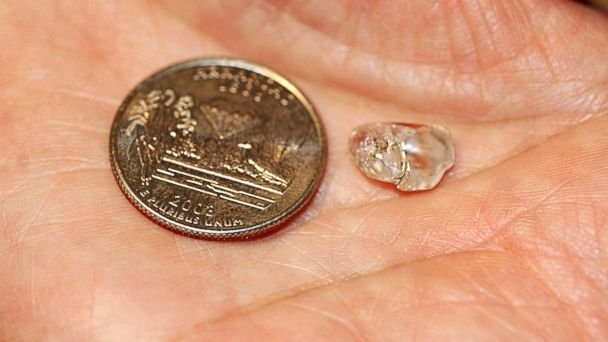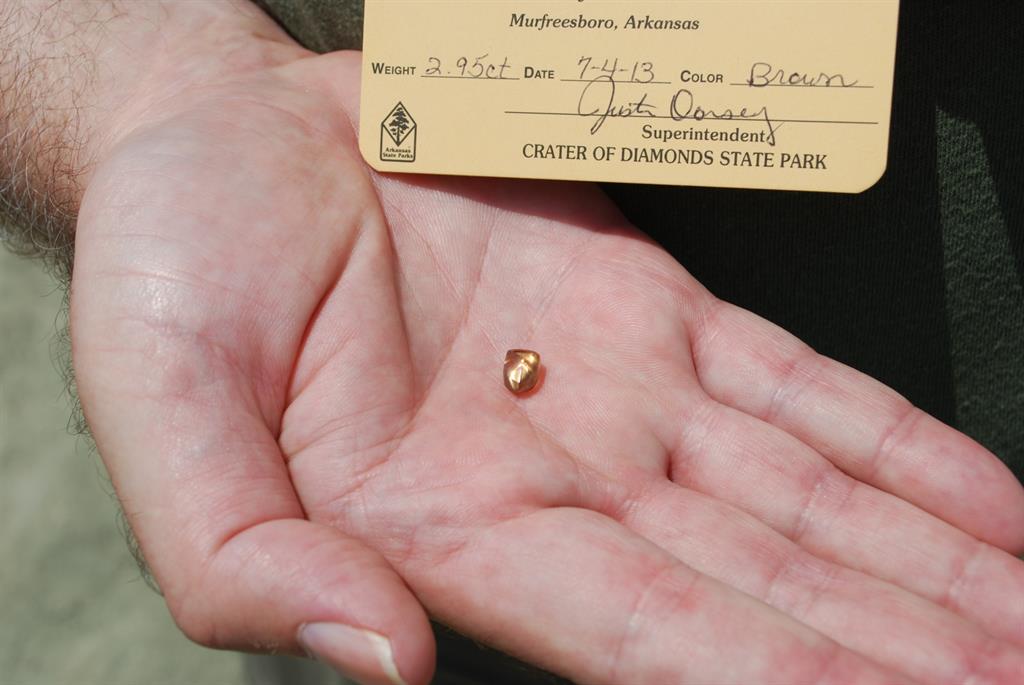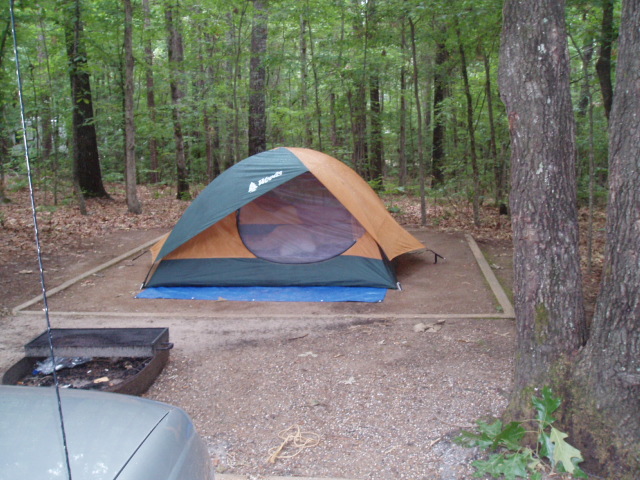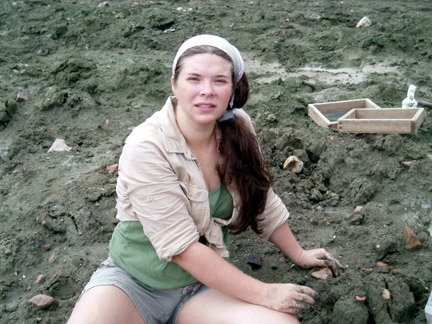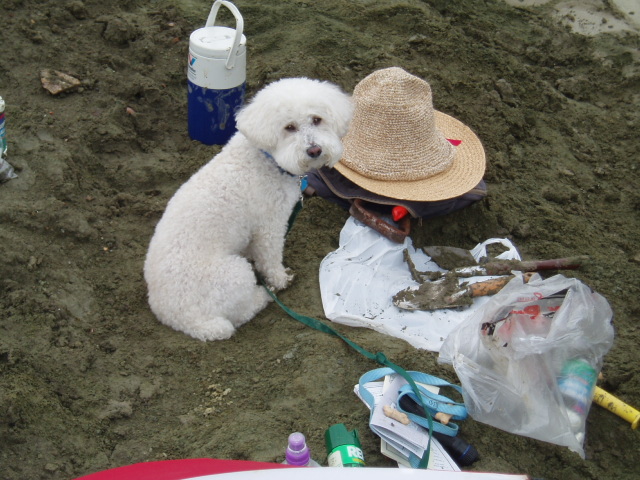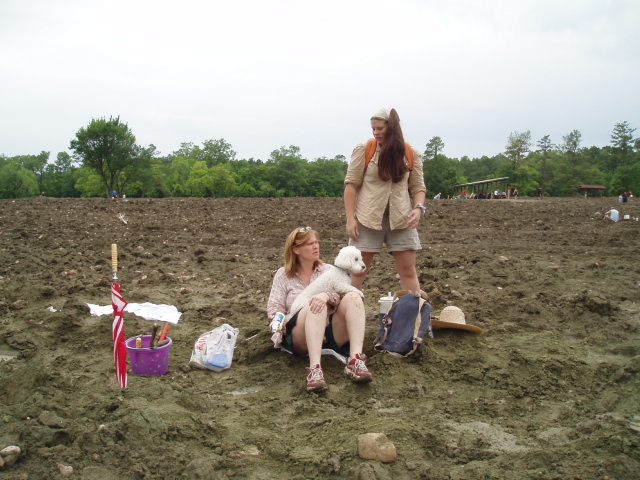Sparkling Times at Crater Of Diamonds
/It's safe to say that at lease a couple visitors to the Crater of Diamonds State Park in Murfreesboro, Arkansas are having a pretty good year so far. The park has been making headlines as visitors continue to "strike it rich" in the world’s only diamond-producing site that is open to the public. The park also has a unique finder's keeper's policy allowing the visitor to keep anything and everything they find.
The latest find to be announced was made by Susie Clark. She and her and her husband had spent days hunting diamonds at Crater of Diamonds, and on the last day she found a 3.69ct diamond. She has named the teardrop-shaped rock “the Hallelujah Diamond”.
As to the potential value of Clark’s diamond, Bill Henderson, the park’s assistant superintendent, said the woman would need to take the stone for independent appraisal.
While Clark’s find is the largest of this year, other park-goers have found 121 other diamonds. In fact over the years the park has produced some very impressive stones.
Lamporite Image courtesy of The Western Australian Museum
The Geology
The Crater of Diamonds is situated over a 95-million-year-old eroded lamproite volcanic pipe. At the tremendous pressures and temperatures some 60 to 100 miles below the earth’s surface, diamond crystallized from carbon, and under those conditions it remained stable. The deeply sourced lamproite magma, from the upper mantle, eventually brought the diamonds to the surface.
The lamproite diamond source is unusual, as almost all diamonds are mined from kimberlite and from alluvial deposits of diamonds weathered from kimberlite. The most prominent lamproite diamond source is the Argyle diamond mine in Australia.
Photo by Doug Wertman from Rogers, AR, USA
The History
Diamonds have continuously been discovered at the park site since 1906 when John Wesley Huddleston bought the farm for homestead.
Huddleston later sold his diamond-bearing land for $36,000. After 1906, several attempts at commercial diamond mining failed. The only significant yields came from the original surface layer, where erosion over a long period of time had concentrated diamonds.
In the early period, 1907–1932, yields from the surface material often exceeded thirty carats per hundred loads. The highest yields coming from the undisturbed subsurface material. The equipment used during this early period mainly consisted of screens that had mesh larger than 1/16 inch. This meant that thousands of small diamonds were passing through the screens every day, flooding into the surrounding field and through the natural drains. It is mind boggling to think of all the diamonds that ran right past those early miners.
A supplement to the Nashville News of nearby Nashville, Arkansas, advertising diamonds mining in the early 1900s
After the first diamonds were found Murfreesboro experienced a "diamond rush". Anecdotes and legends tell of hotels in Murfreesboro turned away 10,000 people in the space of a year. Supposedly, miners formed a tent city named "Kimberly" in honor of the famous Kimberley diamond district in South Africa. However, historical evidence indicates that the Town of Kimberly was actually a development venture in 1909, initiated by Mallard M. Mauney and his oldest son, Walter, on their land immediately south of Murfreesboro. The project failed as the speculative boom generated by the diamond discovery collapsed. Today, the Kimberly area is almost all cow pasture, owned by Mauney's descendants.
During the Second World War, the U.S. government took over the mine. Although diamonds were obtained, it was not successful as a venture due to the large costs involved with U.S. labor. After the war, the property was returned to the previous owners.
From 1951 to 1972, the crater was operated as a private tourist attraction by several companies. The first, The Diamond Preserve of the United States, lasted only about one year. In late 1951, Howard A. Millar took over the property and in April 1952, Millar and his wife, Modean, launched their Crater of Diamonds attraction. In March 1956, a visitor found the Star of Arkansas on the cleared surface. The spectacular find weighed 15.33 carats.
Later, a rival tourist attraction called the Arkansas Diamond Mine, was opened by Roscoe Johnston on the main part of the diamond field hoping to capitalize on the excitement.
Site marker for the Star of Arkansas find
The rivalry between the two tourist operations left both in a weakened state and in 1970, the entire area was consolidated by a private partnership, which then reassigned the property to General Earth Minerals (GEM) of Dallas, Texas. GEM expected to turn the property over for a profit, but ended up heavily indebted. The property was taken over by GF Industries (GFI) in July 1971. GFI continued the attraction until it sold the 80-acre formation and 800 surrounding acres to the State of Arkansas in March 1972 for $750,000. The tourist operation continues to be the major draw for the of Crater of Diamonds State Park.
Notable Diamonds
Below is a list of some of the notable diamonds that have been discovered at the Crater of Diamonds Park.
This list of notable diamonds from the Crater of Diamonds includes several diamonds weighing six carats or more, and the much publicized 3.03-carat Strawn-Wagner Diamond. (photo from Crater of Diamonds State Park)
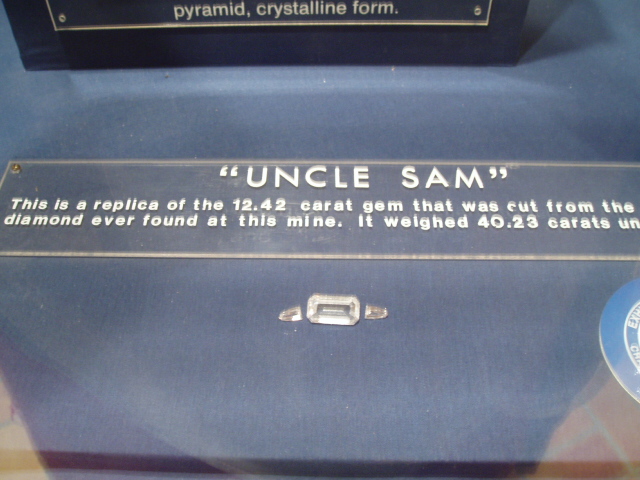
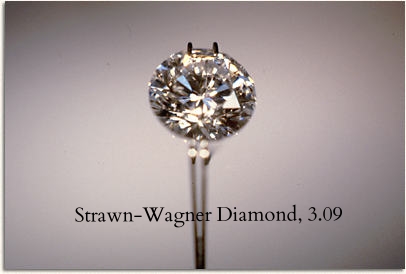
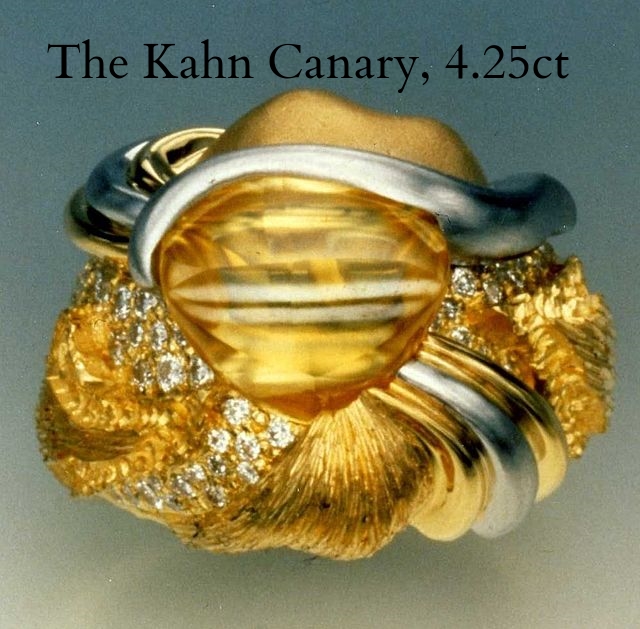
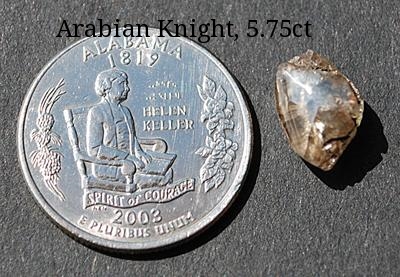
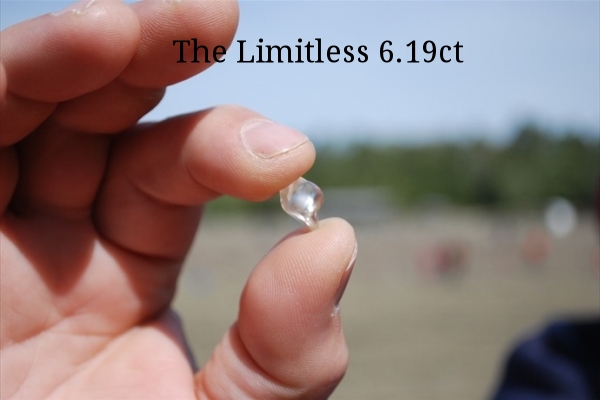
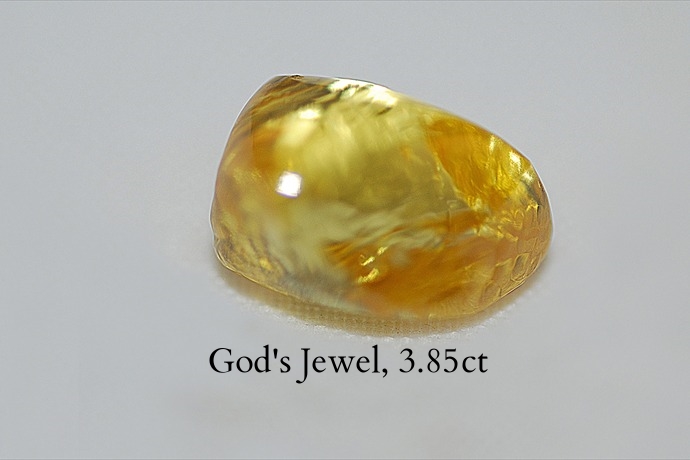
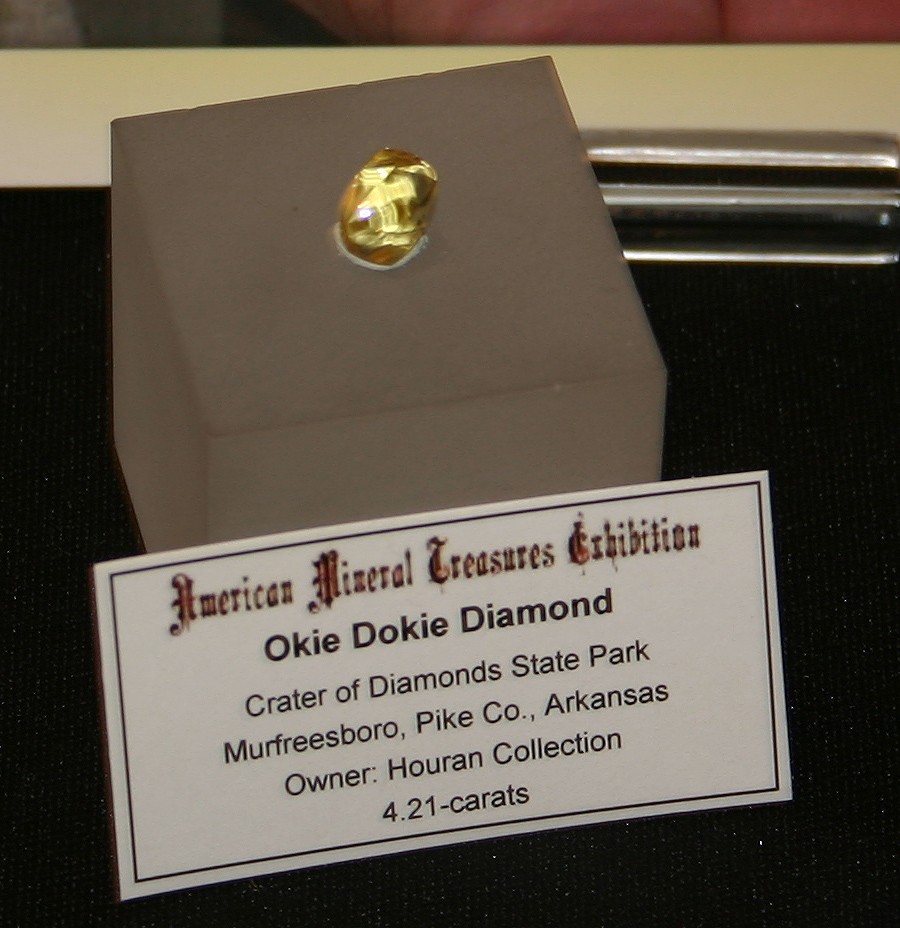
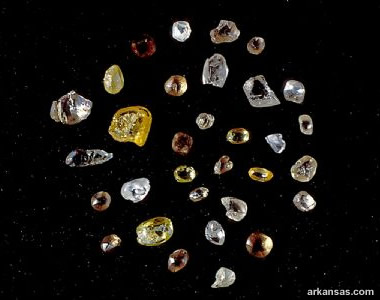
The park has also previously stated the value of some stones found including: the canary yellow stone that 14-year-old Tana Clymer found in 2013. That diamond was sold for $20,000.
One of the most famous stones uncovered at the park was a 3.09 ct stone found at the park in 1990. It was eventually cut into a 1.09-carat brilliant shape and graded Ideal cut/ D color/ Flawless by AGS. That stone, named Strawn-Wagner Diamond, was mounted in a gold and platinum ring and sold to the state of Arkansas. A continually updated list of the most recent recorded finds may be found here.
If you are interested in visiting the Crater of Diamonds State Park here are some things to know:
Fees to search for Diamonds
Adults: $8
Children (ages 6-12): $5
Children under 6 years old: FREE
Admission is good for the entire day. You may come and go throughout the day on the same admission fee.
Tools
Tools are not necessary for diamond seeking, and a good way to search is to walk up and down the rows looking for diamonds lying on top of the ground. However, most diamond hunters like to dig in the soil. Therefore, you have the options of bringing your own tools from home, or you may purchase or rent tools here at the park. You may use anything that is not battery or motor operated for transporting equipment in and out of the search area. For a list of rentable equipment and prices click here. (I also found water filled spray bottles handy!)
It's Finder's Keeper's!
f you find a diamond or any other stone it is yours to take home! In addition to diamonds, you might find one of the many colorful gemstones that occur naturally there. These include: amethyst, agate, jasper, garnet, peridot, hematite and many others.
I myself tried my hand at finding diamonds at the park around 2005. Traveling south with my mother and sister our excitement over the prospect of finding even the smallest of diamonds overshadowed the fact that we would be camping and we hadn't checked the weather. We arrived in late in the evening after getting lost. We couldn't see anything of the park and set up our tent in the dark, so it goes without saying that we had no idea what to expect the next day.
Summer in Arkansas is muggy to say the least. Add to that light rain and you have a "diamond field" of mud. Actually mud feels far too light a word, it was like walking in wet cement.
According to the park, rainfall combined with park staffers’ plowing the 37.5-acre search field can erode the surface of a diamond-bearing deposit, helping to bring more of the stones to the surface and increasing visitors’ chances of finding them.
Unfortunately for us that was not the case and all I was left with was a burning desire for a hot shower after that long day seated in mud; luckily Hot Springs and a real shower were not all that far away! So if you are headed down that way definitely check it out. Bring good shoes, whatever you want for digging, and a lot of optimism!
